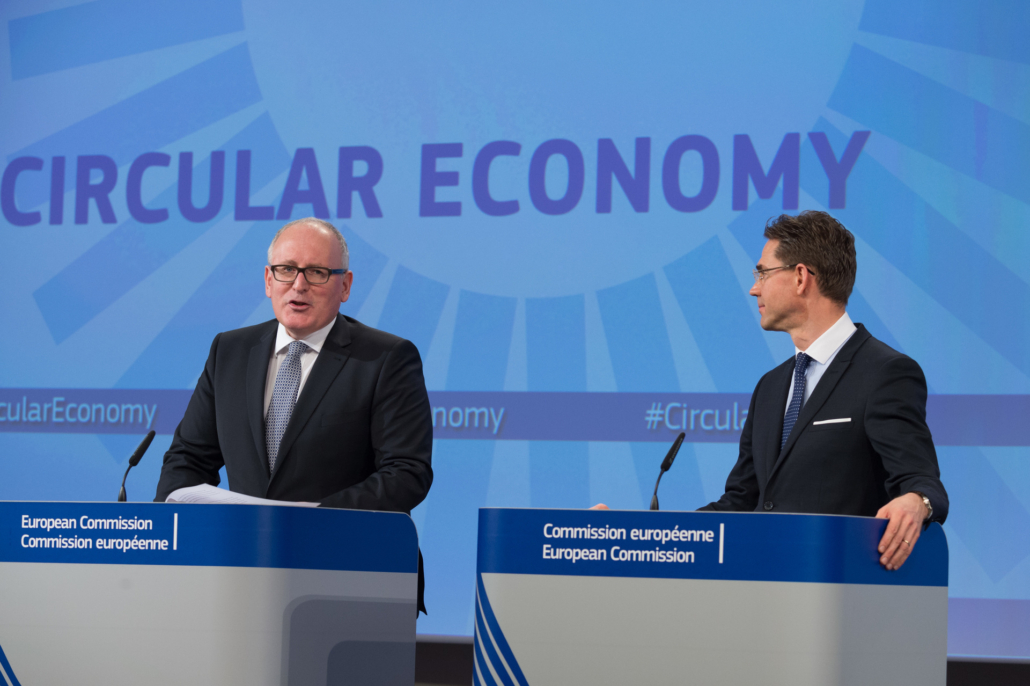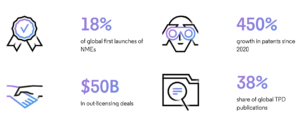
Commission relaunches circular economy action plan
Under its Green Deal, the European Commission has presented a circular (bio)economay action plan that prepares the ground for a sustainable bio-economy.
A main goal of the new Circular Economy Action Plan as a major pillar of the European Green Deal, is sustainable growth. The new Action Plan aims to strengthen the EU’s competitiveness while protecting natural resources and give new rights to consumers. As resouces are limited, the action is focused on the design and production for a circular bio-based economy, with the aim to ensure that the resources used are kept in the EU economy for as long as possible. The initiatives therein will be developed with the close involvement of the business and stakeholder community.
Executive Vice-President for the European Green Deal, Frans Timmermans, said: To achieve climate-neutrality by 2050, to preserve our natural environment, and to strengthen our economic competitiveness, requires a fully circular economy. Today, our economy is still mostly linear, with only 12% of secondary materials and resources being brought back into the economy. Many products break down too easily, cannot be reused, repaired or recycled, or are made for single use only. There is a huge potential to be exploited both for businesses and consumers. With today’s plan we launch action to transform the way products are made and empower consumers to make sustainable choices for their own benefit and that of the environment.
Commissioner for the Environment, Oceans and Fisheries, Virginijus Sinkevi?ius, said: We only have one Planet Earth, and yet by 2050 we will be consuming as if we had three. The new Plan will make circularity the mainstream in our lives and speed up the green transition of our economy. We offer decisive action to change the top of the sustainability chain – product design. Future-oriented actions will create business and job opportunities, give new rights to European consumers, harness innovation and digitalisation and, just like nature, make sure that nothing is wasted.
The transition towards a circular economy is already underway, aiming at:
- Make sustainable products the norm in the EU. The Commission will propose legislation on Sustainable Product Policy, to ensure that products placed on the EU market are designed to last longer, are easier to reuse, repair and recycle, and incorporate as much as possible recycled material instead of primary raw material. Single-use will be restricted, premature obsolescence tackled and the destruction of unsold durable goods banned.
- Empower consumers. Consumers will have access to reliable information on issues such as the reparability and durability of products to help them make environmentally sustainable choices. Consumers will benefit from a Right to Repair’.
- Focus on the sectors that use the most resources and where the potential for circularity is high. The Commission will launch concrete actions on:
- electronics and ICT – a Circular Electronics Initiative’ to have longer product lifetimes, and improve the collection and treatment of waste
- batteries and vehicles – new regulatory framework for batteries for enhancing the sustainability and boosting the circular potential of batteries
- packaging – new mandatory requirements on what is allowed on the EU market, including the reduction of (over)packaging
- plastics – new mandatory requirements for recycled content and special attention on microplastics as well as biobased and biodegradable plastics
- textiles – a new EU Strategy for Textiles to strengthen competitiveness and innovation in the sector and boost the EU market for textile reuse
- construction and buildings – a comprehensive Strategy for a Sustainably Built Environment promoting circularity principles for buildings
- food – new legislative initiative on reuse to substitute single-use packaging, tableware and cutlery by reusable products in food services
- Ensure less waste. The focus will be on avoiding waste altogether and transforming it into high-quality secondary resources that benefit from a well-functioning market for secondary raw materials. The Commission will explore setting an EU-wide, harmonised model for the separate collection of waste and labelling.The Action Plan also puts forward a series of actions to minimise EU exports of waste and tackle illegal shipments.
-
The European Green Deal sets its ambitions on building a climate-neutral circular economy, where economic growth is decoupled from resource use. A circular economy reduces pressure on natural resources, and is a precondition for achieving the climate-neutrality target by 2050 and halting biodiversity loss. Half of total greenhouse gas emissions and more than 90% of biodiversity loss and water stress come from resource extraction and processing. Within the bio-economy strategy the Commission aims at sourcing bio-based materials such as recombinant spider-silk, mycelium-made fashion, creation of novel protein sources via biotechnological processes, climate neutral crops, bio-based chemicals etc.
The amibition of the Commission to be at the top of shifting the economy to a more sustainable model that is independent from limited non-renewable resources such as fossil resources, has been endangered by the BREXIT. The EC long-term budget and the EU’s R&D innovation programme Horizin Europe is set to be cut by €20bn, which would mean, there was zero growth in investments into future technologies.


 White House
White House Clarivate
Clarivate H. Zell - wikipedia.org
H. Zell - wikipedia.org